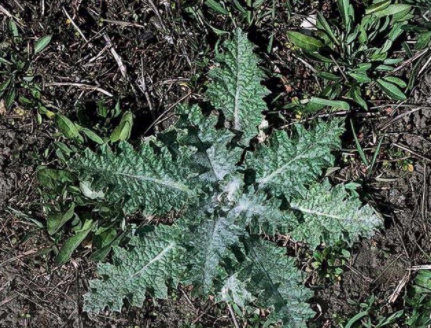Wildflower Scavenger Hunt
There have been so many times that I've heard someone say, while overlooking the vast expanse of the sagebrush steppe ecosystem, that there just "isn't anything here!" Of course, sometimes this happens because they don't see signs of human civilization, but other times its because this or that person hasn't trained their eyes to see the rich diversity of flora and fauna that exists just under our eyes' gaze.
The Boise Foothills, and other northern Great Basin Desert ecosystems are surprisingly diverse if you know where to look. Obviously, this blog is being written during the COVID-19 pandemic, and Idahoans are flocking to their open spaces for emotional and mental release during these difficult times. This is the perfect opportunity for you to get more acquainted with some of the most resplendent wildflower displays anywhere in the west.
Help us populate this blog with what wildflowers you are finding out there. You can do this by:
- Being sure to follow Recreate Responsibly Idaho guidelines during the pandemic.
- Tagging your photos to us on Instagram @IdahoSierraClub, and we'll give your photos a place on this page or on our social media accounts, along with credit for the add. And we'll help you identify anything that you might find out there!
- Using the hashtags #boisefoothills, #boisefoothillsflowers and #sagebrushsteppe on your photos
- Following Leave No Trace's social media guidelines to help protect our open spaces
Some great viewing options, and a great place to start, would include visiting the North End Native Plant Preserve. You can view a list of the native wildflowers and plants that can be found here. In addition to these locations, most common wildflowers can be found at most elevations across the foothills, although the higher in elevation you go, the later in the season they will pop. You can also help the community eradicate Scotch Thistle, an invasive plant that grows, well, everywhere. More details on how to do that below.
Here is a short list of flowers that you can find but there are so many more.
Common Wildflowers you might find
Wildflowers Potentially in Bloom
*Woolly-pod milkvetch (Astragalus purshii)
*Aase’s onion (Allium aaseae) – rare endemic plant to Boise Foothills
*Biscuitroot (Lomatium simplex)
*Woodland star (Lithophragma parviforum or Lithophragma glabrum)
Arrowleaf Balsamroot (Balsamorhiza sagittata)
Mulford's Milvetch (Astragulus mulfordiae)
Shrubs
*Bitterbrush, Antelope brush (Purshia tridentata)
*Basin big sagebrush (Artemisia tridentata subsp. tridentata)
*Golden Currant (Ribes aureum), blooming now
*Syringa or Lewis’s mockorange (Philadelphus lewisii) – Idaho State Flower! Not blooming so perhaps difficult to ID.
Scotch Thistle Removal
Scotch thistle (Onopordum acanthium) is an Idaho noxious weed which is well established throughout much of the United States and Canada. The plant was introduced into the United States during the 1880s possibly as an ornamental and/or as a medicinal plant, and subsequently escaped from cultivation. Severe infestations typically occur in areas with high soil moisture like wetlands, swales, or culverts and plants form tall, dense stands that impact wildlife habitat by out-competing native plants. f

Scotch thistle is considered a biennial weed but can also grow as an annual or short-lived perennial pending on weather conditions. The plant reproduces exclusively by seed which germinate throughout the year. Large Scotch thistle plants can produce from 20,000 to 40,000 seeds that remain viable in soil for at least seven years
The best time to treat scotch thistle is when it’s still just a rosette on the ground, which is right now. First, learn to properly identify the plant using the online resources below. Sever the tap root of the rosette at least two inches or more below the soil surface. Leaves have spines to make sure to wear gloves when handling the plant.
There is a native thistle plant that you should be careful of. This thistle is found most prominently aroud Table Rock, so please be sure to be careful.
Links to Sources:
https://wric.ucdavis.edu/information/natural%20areas/wr_O/Onopordum.pdf
http://www.idahoweedawareness.org/vfg/weedlist/scotchthisle/scotchthistle.html